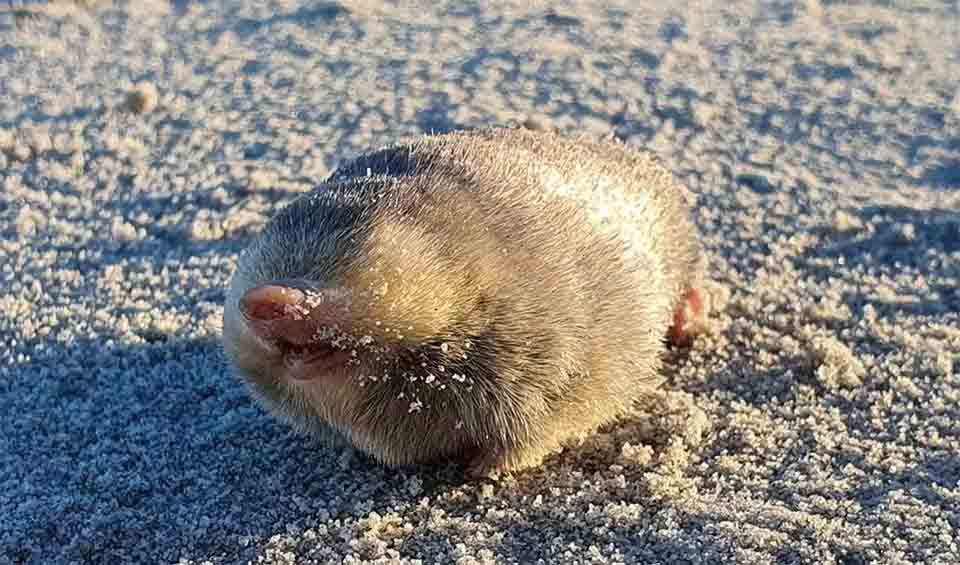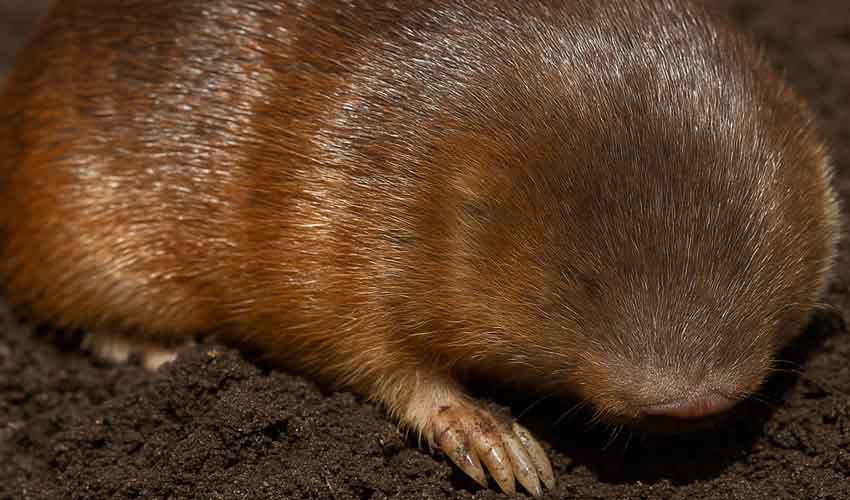Chrysochloridae – Golden moles
The real-life alien tribble, but they are not actually moles, nor are they always golden
Characterized by their compact, fusiform bodies, pink noses, and unique metallic sheen ranging from golden to iridescent colors, golden moles have adapted remarkably to life underground. Their most distinctive physical features include small, often non-functional eyes completely covered by fur, rendering them effectively blind, and robust, spade-like forelimbs specialized for digging.
Despite their name and superficial resemblance to true moles of the Talpidae family, golden moles are not closely related to them. Instead, their evolutionary path has converged similarly due to their subterranean lifestyles, a phenomenon known as convergent evolution. Golden moles belong to seven different genera, each with species that have adapted to a wide range of habitats, from moist, swampy environments to the arid conditions of the desert. This versatility demonstrates their incredible ability to modify their burrowing behavior and dietary habits to suit their surroundings.
Golden moles lead mostly solitary lives, engaging in minimal social interactions outside of mating seasons. They are fiercely territorial, with individuals maintaining and defending their burrow systems against intruders. Their diet primarily consists of small invertebrates such as insects, earthworms, and occasionally small vertebrates, which they locate through vibrations and their keen sense of touch and smell.
One of the most intriguing aspects of golden mole biology is their possession of a cloaca, an anatomical feature more commonly associated with birds and reptiles. This single opening serves multiple functions, including excretion and reproduction, underscoring the unique evolutionary adaptations of these mammals.
Despite their resilience and adaptability, golden moles face significant conservation challenges. Approximately half of the species within the Chrysochloridae family are threatened with extinction due to various human-induced factors. Habitat destruction from agricultural expansion, urban development, and practices like sand mining directly impact their burrowing grounds. Additionally, the use of pesticides in farming can reduce their food sources, further threatening their survival.
Genera in this family
Both genus members are on the brink of extinction due to habitat destruction
Noted for their beautifully iridescent fur and highly specialized lifestyle adapted to underground living
Can sense vibrations through the ground using its bones, particularly its skull and middle ear



